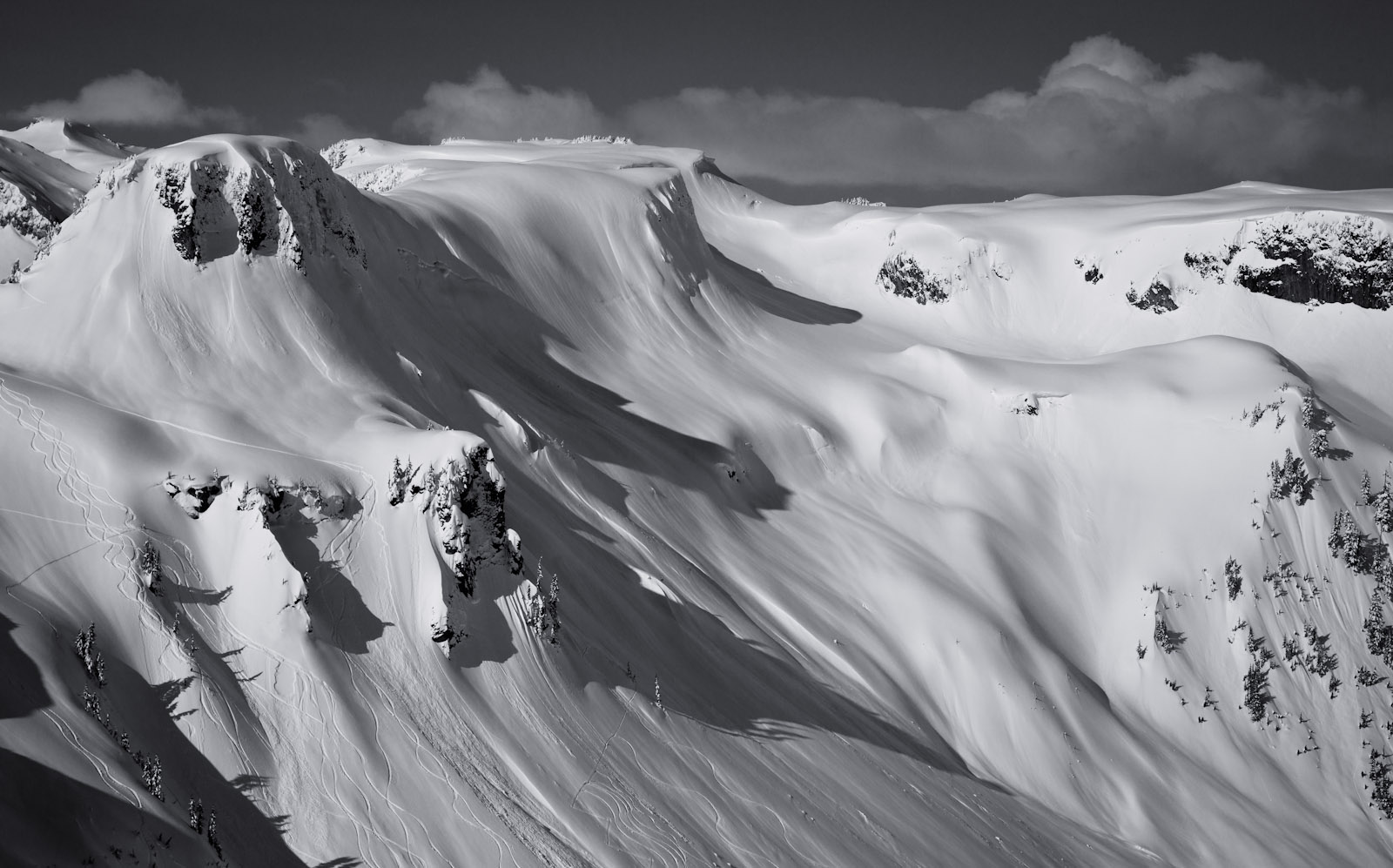It seems like the perfect storm has arrived in the backcountry. With the popularity of ski touring growing year after year places were already starting to get crowded. Now add a certain virus as well as reserved ski resort and it has kicked the backcountry into overdrive. With already crowded trailheads and a mindset focused on first tracks this could be a recipe for disaster. In the post below I though I would explain what goes into a ski tour. From a few days before to returning back to the car there is a process that can help keep you safer in an unsafe environment. Hopefully within this post you can gain some Backcountry knowledge and learn new tricks.
Welcome to the Backcountry
First off we have to acknowledge that most of the trailheads are going to be chaos. There will be people putting on skins for the first time and this post focuses on what to learn. No one just jumps into the backcountry and pulls off a week long ski traverse. It’s all about taking steps and progressing over time. While pushing yourself a bit is okay and important, going way beyond your abilities is super dangerous. There are different ways to gain experience and no exact way is right. While I highly recommend taking avalanche education classes, a 100 days on the snow with a partner with backcountry knowledge is more valuable then only a weekend in a class room two years ago.
Below I’ve broken this post down into a few important topics. Hopefully this can give beginners a jump start as well as refresh for others. If you are looking for more in depth posts check out my Splitboard 101 page. While to some of us the post below may seem like common sense we all had to learn walking at one point.
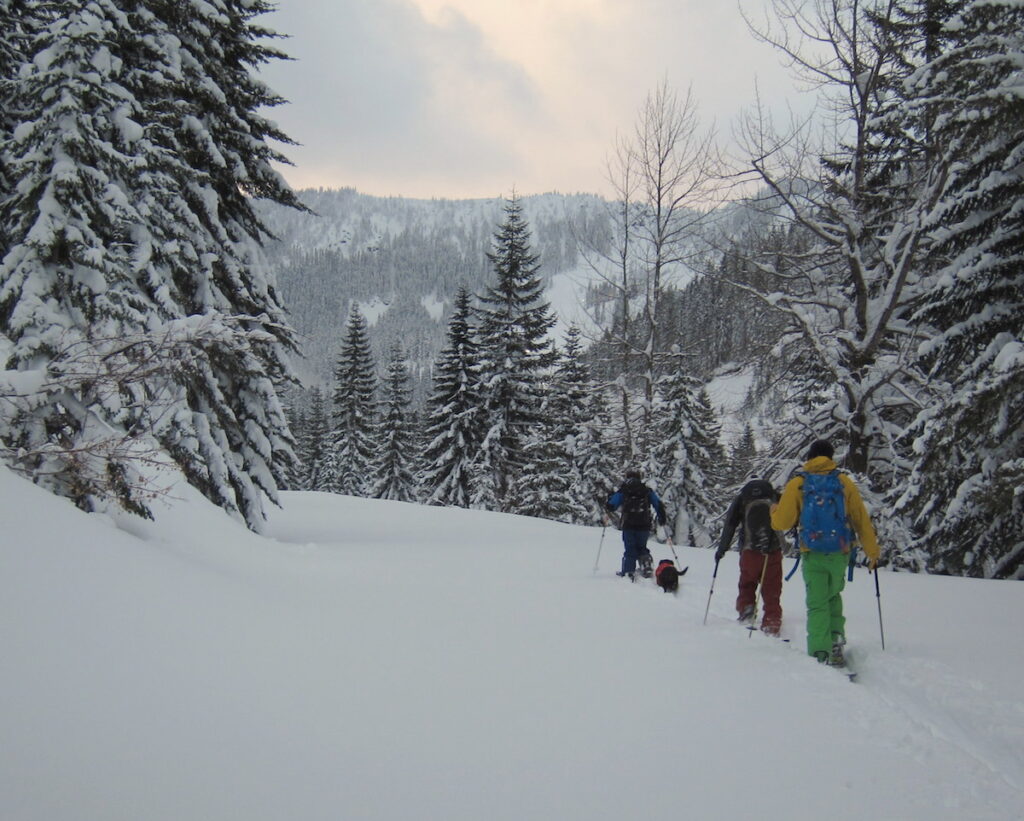
What is the Most Important Thing to Have in the Backcountry
A couple of weeks back I had a friend who asked about getting a splitboard. We started going over the costs of skin, bindings and a board with the price really starting to add up. Quickly the conversation moved to having a beacon, probe and shovel as these are your most important pieces of gear. We usually say that we are not only wearing a beacon for ourselves but also for our partners and people within the area. It is taboo to head into the backcountry without one and it should be the first thing to purchase. The backcountry is a dangerous place and a Recco System is not an alternative.
When purchasing a beacon don’t go cheap. In this article I explained why it is vital to have a up to date beacon. Updating your system can be the difference between life and death.
Now to the Days Before a Ski Tour
Have you ever heard of a telemetry station? Chances are you have but don’t realize how valuable a resource they are. In this link you can find the NWAC list of Telemetry stations within the Cascade Mountains. From the warmth of your home you can see the temperature, moisture and wind in a specific area. Now if you look at multiple stations within an area you can start getting an idea of what to expect in the backcountry.
Here is an example below.
There is a storm rage in the mountains for 3 days and it has dropped off two feet of snow. You wake up in the morning and as you pack your gear you check the telemetry station at the top of the mountain. Well.. it seemed the tail end of the storm came in warm with the temperature reaching 38 degrees. That knee deep snow you were looking forward to just got rained on and you didn’t even have to leave your house to find out. No need to wait for the snow report at the ski hill because you have it all at your finger tips.
How About Another Example Showing a Dangerous Situation
So back to that storm we were just talking about above. Instead of the temperature increasing you had a strong wind coming from the south. You were watching the telemetry report and the wind gusts have been consistent for days. With that knowledge you can expect the North facing slopes to be wind loaded with a massive potential for unstable conditions. If the terrain is safe it could be the difference between 2 inches and a foot. If the terrain is dangerous then you can expect avalanches and should avoid these aspects.
Telemetry Stations are a Window into the Mountains
Now that you have an idea about both weather and aspects you can start considering what tour to do. Come up with a few ideas and after checking the local avalanche forecast then work your plans around it. This is some backcountry knowledge I’ve learned over the years and the first thing I do before planning a trip. Here is a more detailed link of how to track weather
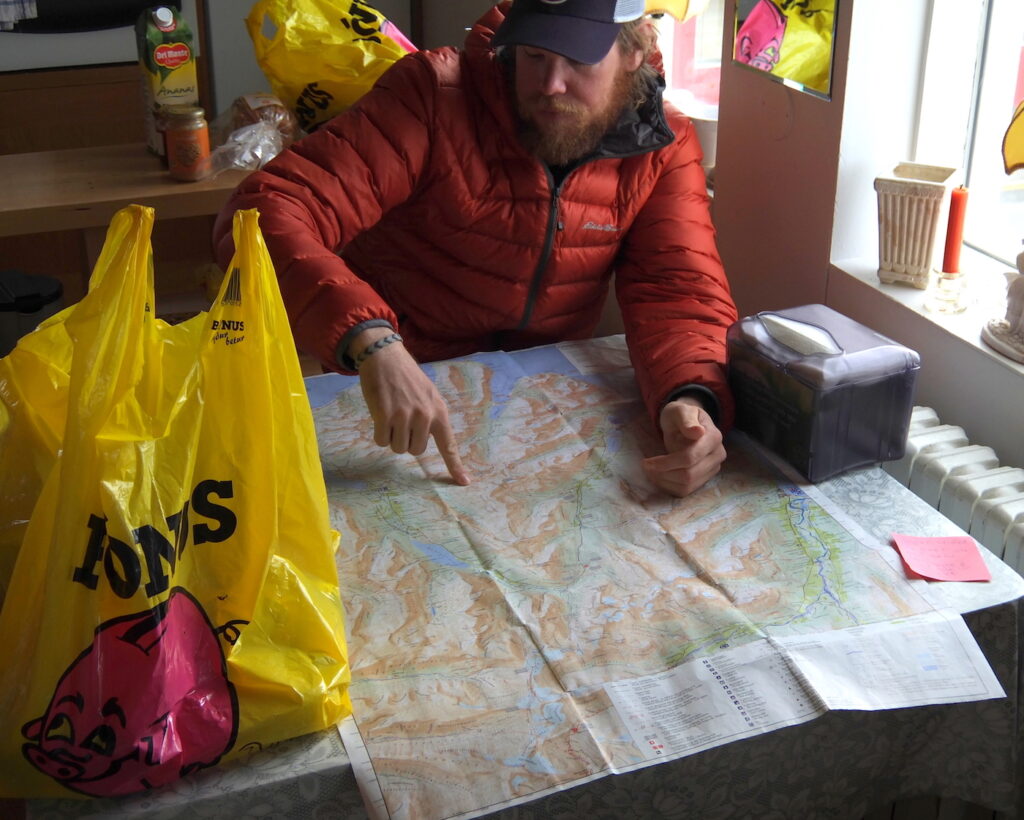
Driving to the Trailhead can be just as valuable as skinning in the Mountains
From the comfort of a car you can look for obvious signs about the conditions around you. If you are in an area that has trees you can see where the snow level is from the accumulation. Look at what trees have more snow within a bowl can give you an idea of how the wind has been transporting it. Do you see any natural avalanches on the slopes above you and if so what aspect. All this things are incredibly valuable and you should already have a general idea of what to expect before even leaving the car.
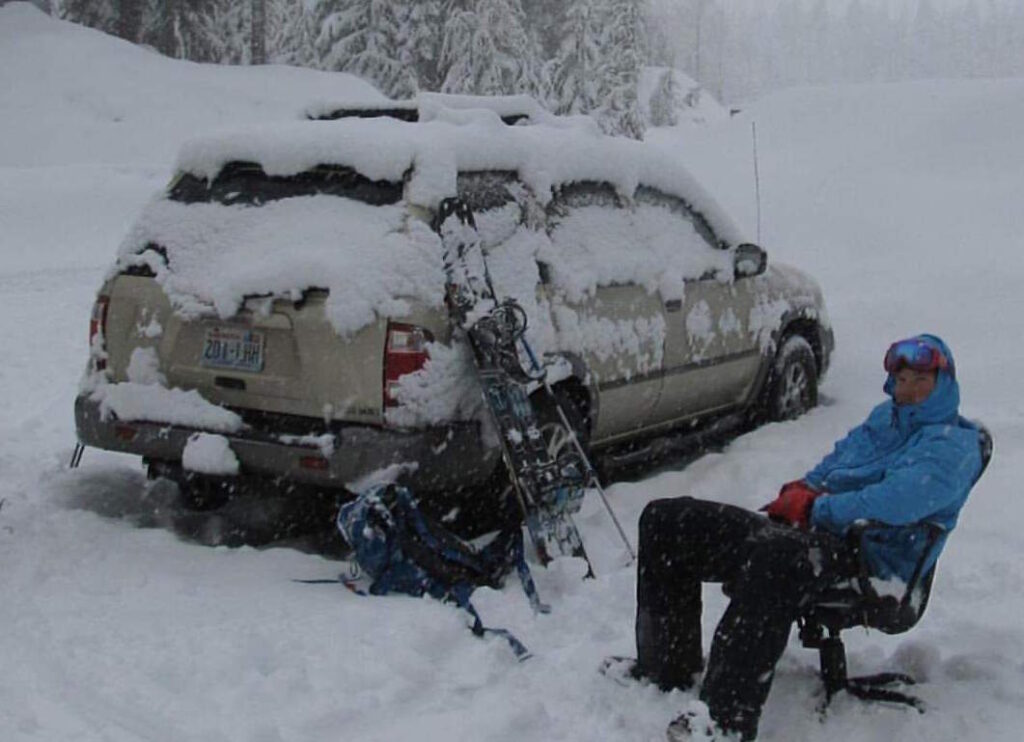
Welcome to the Trailhead
I mentioned this before but it needs to be said again DO NOT GO FAR BEYOND YOUR ABILITY LEVELS. If you are still learning how to skin you should focus on an ascent where you can ride directly back to the car. It is not uncommon for your skins to fail after numerous climbs (Here is how to solve that) and could create a serous situation. When choosing what to bring in your backpack make sure to have not only the gear you need for the day but also something to keep you warm if things go bad. In the photo below we decided to drop down a different gully then the one we climbed. Long story short we spend the night under a rock and I was happy to have dry base layers in my pack.
Over the years I always kept an extra pair of gloves and coat in a dry bag in case of the unfortunate situation of an emergency overnight bivy. Weather is a massive factor of choosing what gear you need for the day clothing wise but you should always have a backup. It’s a necessity to know what the forecast is going to be but expect that it can change for the worse. With that mindset you are prepared for if things go wrong as no one says “I’m going to break my leg today”.
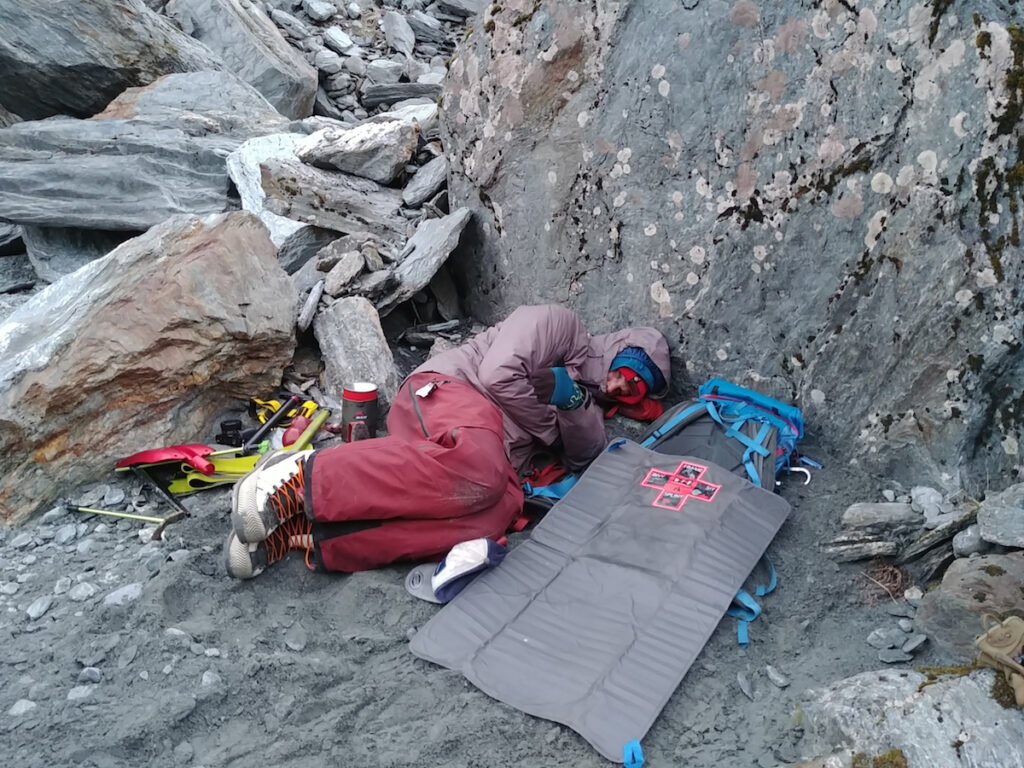
Group Dynamics
Welcome to one of the more controversial subjects. Unlike many other sports the more people you are with the more dangerous a trip becomes. It’s basically the same idea as ” Two is a group while three is a crowd”.
What does this mean when backcountry skiing?
Ever been in a group of 4 and make plans to go out for a night. Ever been in a group of ten and attempt to make those same plans? The bigger a group is the harder it is to make solid plans. Immediately it turns into groups within the groups with different ideas as well as comfort levels. When being in the backcountry you need to have a solid plan and an open line of communication. Simply stated communication breaks down with larger groups. We all gain backcountry knowledge but in big groups it can be thrown out the window as people start feeling uncomfortable about speaking up. A unfortunate example of this is the Tunnel Creek Incident that happened up at Stevens Pass a few years back. There is some solid insight of how things went wrong even with people who had skied there entire lives in the link below. I HIGHLY recommend checking it out
On the Skin Track
Have you ever gone on a hiking trail and randomly run into another trail that isn’t on the map. You can’t help but wonder where it goes and if it is a better option then your original plans. Say you decided to take that other trail and a few hours later you realize it took you way off track. As you try to figure out where you quickly realize that you can’t make it back to your car before dark. Now put that situation into the winter and on a skin track and it can get serious really fast. It is a pretty common mistake that usually involves Search and Rescue and a huge hassle for everyone around. Once again no one says I’m going to get lost in the Wilderness before setting out for the day but it does happen.
You have no idea what the person who put that trail in was thinking and or planning. I’ve put in skin tracks for multiday ski traverses and if someone had followed they would find themselves in the middle of nowhere. While it may seem like a good idea to follow someones tracks at the time it is not. For example in the photo below we dropped into what looked like an amazing couloir. 2/3 down we realized it was a cliff and had to hike back up. Now imagine you are skinning by and see our tracks dropping in and decided to follow them. While we had crampons to get ourselves out you didn’t and now things are incredibly dangerous. A few hours and a helicopter later you are back on flat ground and regretting following those random tracks. Long story short….Don’t do it!!
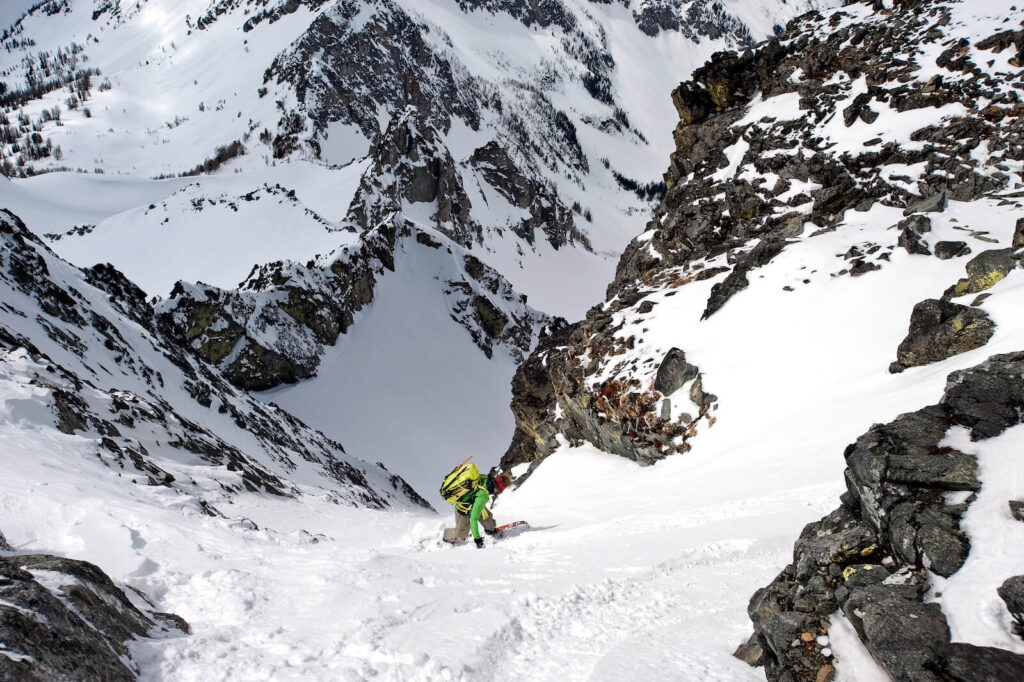
The Battle Between Low Angle and Steep Skin Tracks
This is another one of those conversations that can go on forever and there is no right answer. I am just going to go out and say the I PREFER LOW ANGLE SKIN TRACKS and think it is the best way to go. I believe it takes more mental energy battling with whether your skins will slip out then to add an additional few hundred feet to your day. If you know many people are going to use the track then why make a skin track where the corners are going to get blown out. Now obviously the terrain is what dictates how a skin track is put in but if you don’t need to go straight up then you can save a high amount of energy by keeping it mellow.
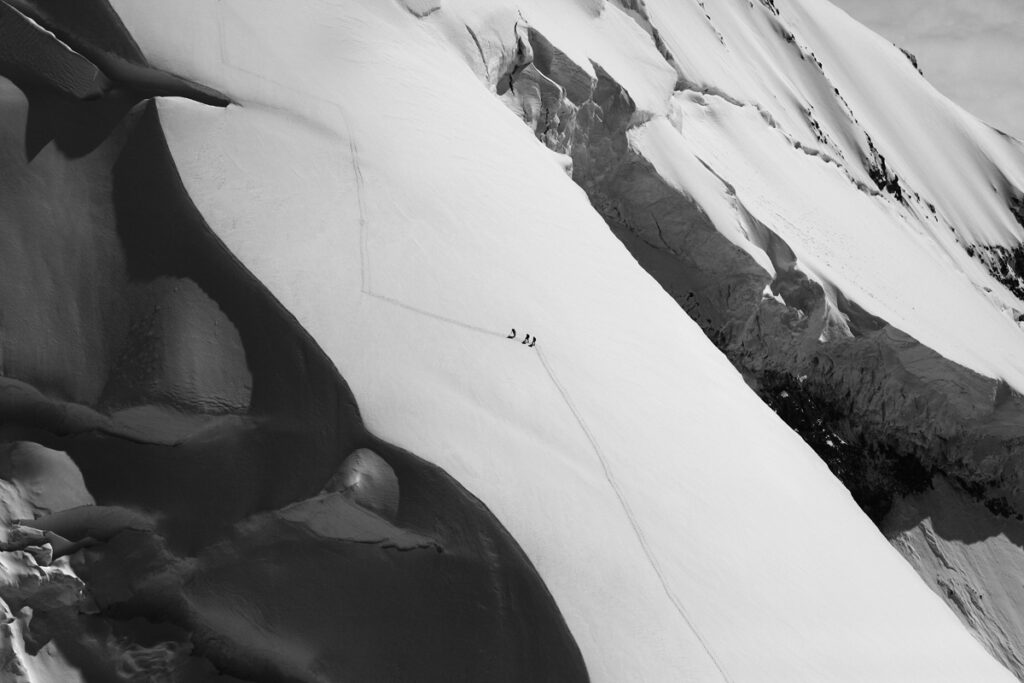
Exposure to Avalanche Terrain While Ascending
Think of this as the difference between walking on a crosswalk versus the middle of the road during rush hour traffic. Sure you can quickly make your way across 99% of the time but it will catch up with you one day. When climbing in the mountains it is smart to have this mindset and not take unneeded risks. Compare this to climbing up a mellow ridge versus directly up an avalanche chute. Now obviously all of this is condition permitting but the best practice is to minimize exposure. If you look up at a slope and see that you are in a slide path get out of it as fast as you can. If you are committed to said path get up and don’t take unwarranted breaks. Below is an example of a time I was a few feet away from a disastrous situation.
A long time ago I was climbing up a steep couloir with a friend. We had been using our crampons and ice axes for hours and were quickly getting exhausted. Once we made our way to a mellower slope we moved off to the side and dug out a bench to rest comfortably. While eating some food we looked above only to see a massive chunk of ice flying down the slopes past us. If we had stayed in the middle of the gully it would have hit both of us. Needless to say for the rest of the climb and from that day on we stuck to the side of the gully. While it had been a terrifying experience we were lucky to get out safely. At the time I had very little backcountry knowledge but I gained a lot that day. It’s not the easy days that you learn but the hard ones.
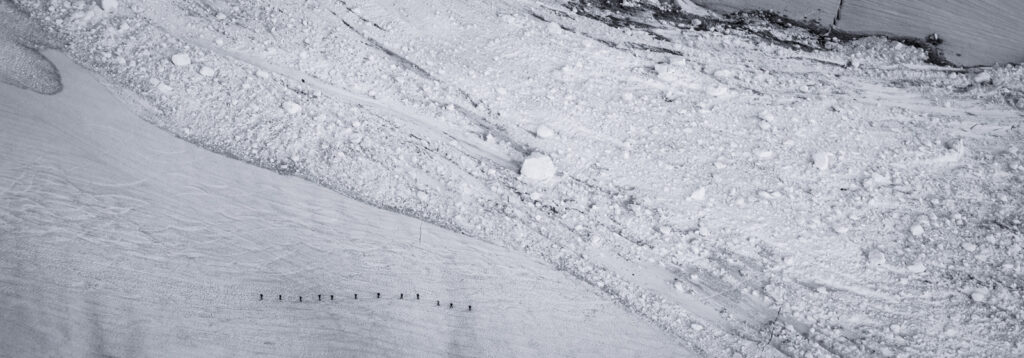
Descending in the Backcountry and the Best Mindset
We all know what avalanches are but did you know that there are many different types of avalanches. There are slabs, sluffs, wetslides, natural, human triggered and the list goes on forever. Though many things are important over the years my main focus has been what or who is below you. If you get caught in an avalanche simply put YOU made a mistake. It takes time to learn what to look for but the signs are almost always there. From roller balls in the snow to shooting cracks. Out of all the things to learn this is the most valuable backcountry knowledge as avalanches are the most common cause of death in the mountains. The best way to gain insight is to take a class but you can also read numerous books as well as listen to the advice of trained professionals. In the bottom of the page I’ve provided a list of classes to be found as well as a few local avalanche forecasters. If there is anything of value within this post it is the links at the bottom.
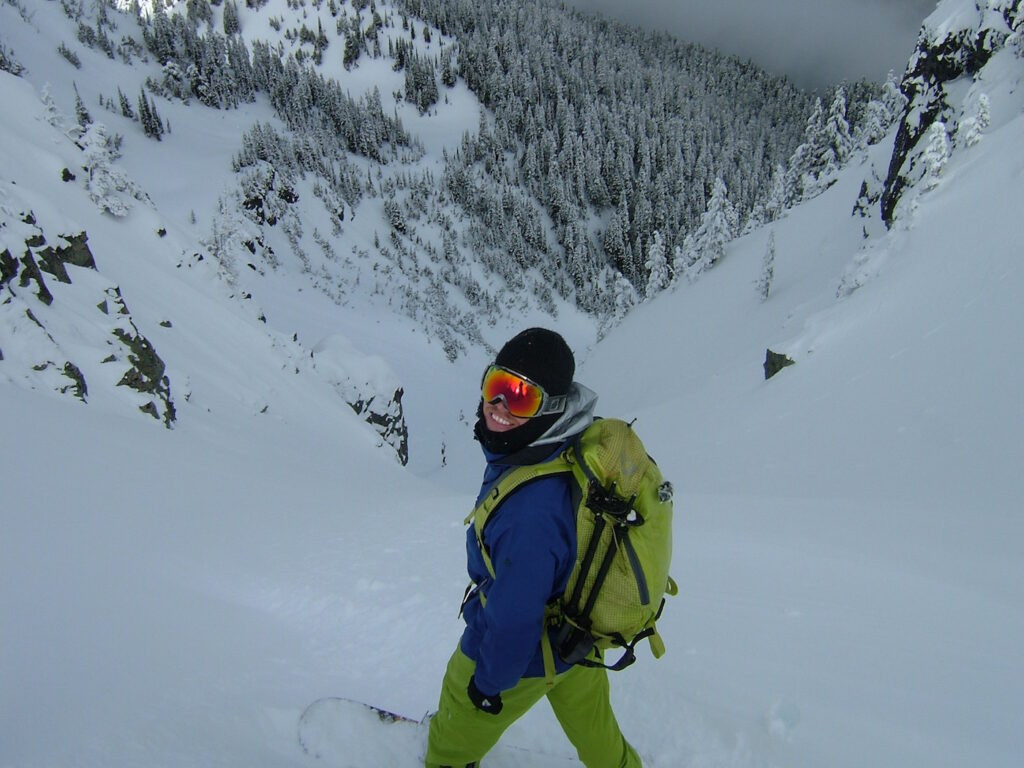
What is a Slab Avalanche and Why is Scares the Crap Out of me
We have all seen it in the ski videos. Someone drops into a bowl and all of a sudden the terrain breaks up all around them. This is because you have layers of snow on top of layers of snow. Every try to drive on an icy road, now image that road covered in a foot of new snow and tilted to 35 degrees. While causing an avalanche under your feet is scary causing the whole slope to break around you is another story. Out of all the things to watch out for this is number one on the list. Read avalanche forecasts (provided below), listen to the slopes around you, dig hand pits and most of all gain backcountry knowledge. Soon enough you will be able to look at the surround mountains and find evidence of instability.
Here is possibly the best example on the Internet. Notice how a small avalanche triggers a massive slab.
In Conclusion
As I mentioned above numerous times it is though experience that we get better. With the crowding of the backcountry we can expect more fatalities and injuries. It is a numbers game so the best thing is to be prepared for the worst. With the internet these days you have an endless amount of resources at your fingertips. From Avalanche Forecasts to Search and Rescue, phones have become almost indispensable. While it is a great resources they shouldn’t be relied on exclusively in the backcountry and shouldn’t replace a map and compass.
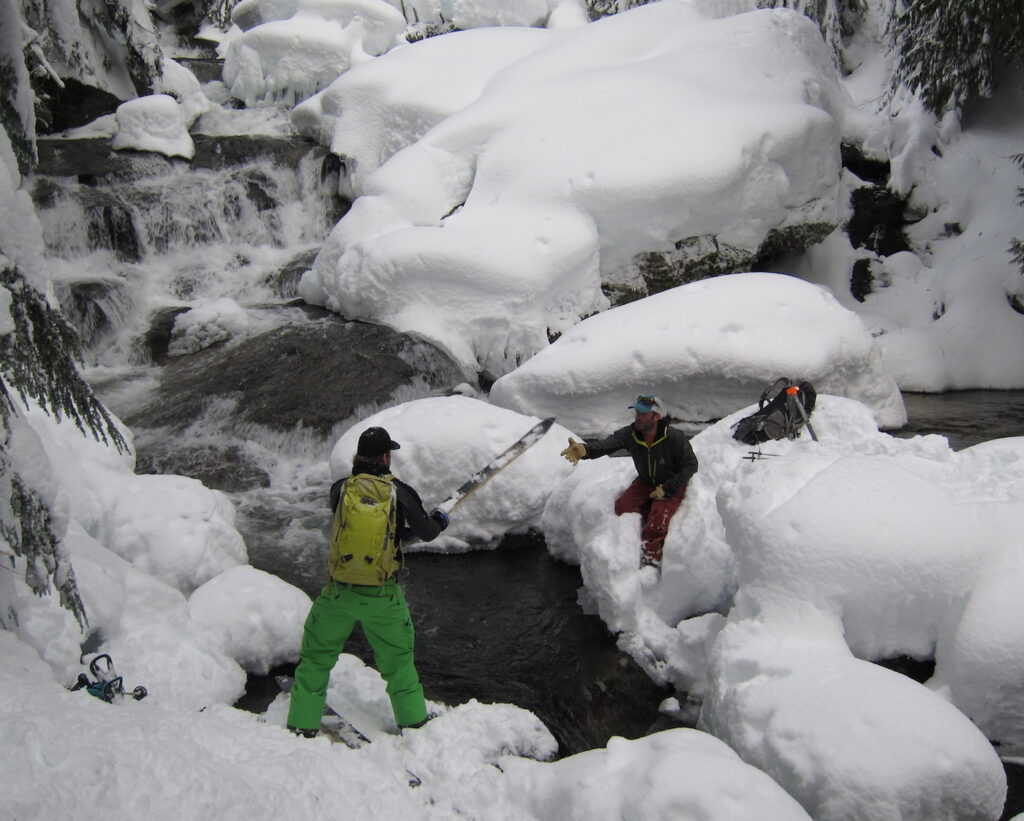
I hope this has helped you attain some backcountry knowledge. Don’t fear making mistakes but make sure to learn from them. Throughout the season I will be posting more stuff like this, gear reviews and trip reports. Thank for reading. More info can be found at the link below. Huge thanks to both John Scurlock and Jason Hummel for use of there photos.
If in the United States
Here is a database for different places you can take avalanche courses
International
Australia
Adam West has years of experience and I highly recommend his courses if in Oceania
Checking Out the Weather Forecast
Avalanche Forecasts
These are the different zones with links to where you can find avalanche forecasts by clicking on each one

